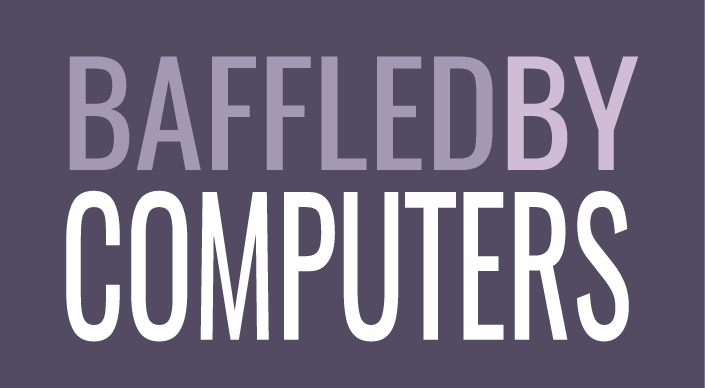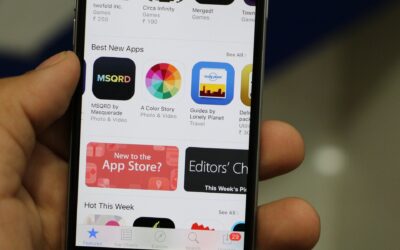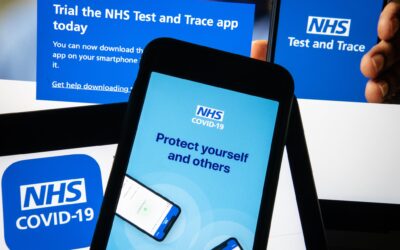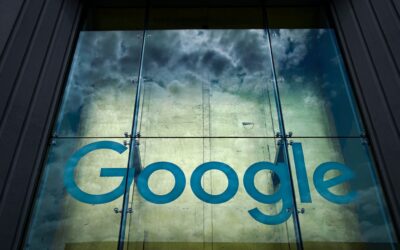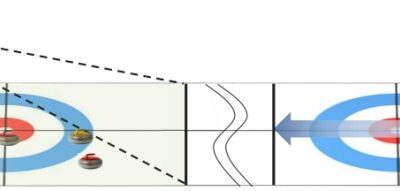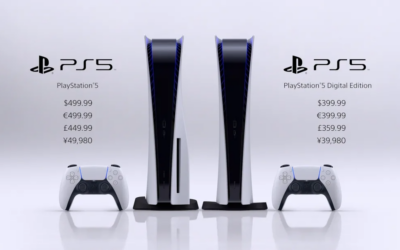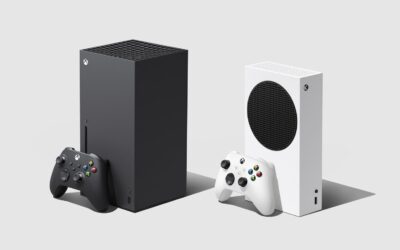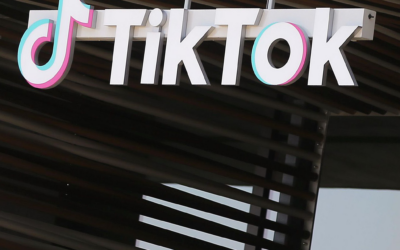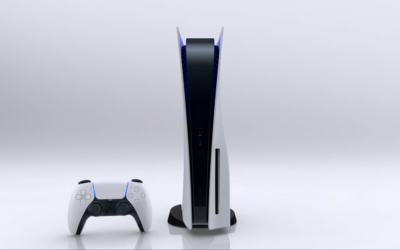Xbox has launched a new “Family Settings” app ahead of the release of its next-generation consoles.The new tool – which works on the current Xbox One as well as the upcoming Series X and S – allows parents and carers to change a variety of settings in order to keep their children safe.They include setting screen time limits and deciding content filters to ensure that young people are not exposed to inappropriate content.It is available for both iOS and Android and can be used to control Xbox settings remotely.Microsoft noted that the release of the app comes both at the start of the school year as well as a time that young people were turning to gaming during social distancing, which poses extra challenges for ensuring it is “part of a balanced life”.The app has been in a preview version for the past few months, and has changed over that period. The company has added new features and tweaked old ones.Read moreThe main functions of the app are: setting screen time limits, choosing content filters, deciding who and how children and play or communicate with, approving or denying friend requests and looking activity reports that detail how much time each child is spending on their Xbox.Additional features will be added over time, Xbox said.It requires that young people are set up with a child or teen account, which Microsoft says on average takes just minutes. Once that is set up, the accounts can be linked, and the mobile app will receive notifications when the Xbox account does things such as receive friends requests.It should work just the same on the new Xbox Series X and Series S when they arrive on 10 November, Microsoft said.
The Independent Articles
Spotify and Fortnite developers join coalition against Apple to fight ‘unfair’ prices for in-app purchases
Over a dozen companies, including Epic Games, Spotify, Tile, Deezer, Protonmail, and Match Group, have formed the ‘Coalition for App Fairness’ in order to fight what they see as Apple’s unfair advantage in its App Store.The coalition criticises Apple’s 30 per cent tax on companies offering in-app purchases on its iPhones and iPads, as well as claimed anti-competitive policies and a lack of consumer freedom.This is because Apple owns both the hardware and the software and therefore, the companies argue, implement policies for music streaming services, for example, that benefit Apple Music over other services.Read more“One company has near total control over the mobile ecosystem and what apps consumers get to use. After nearly a decade with no oversight, regulation, or fair competition, it’s time for Apple to be held accountable”, a statement on the website reads. “Every app developer [should] have an equal opportunity to innovate and engage in commerce, free from draconian policies, unfair taxes, or monopolistic”.The coalitions suggestions are numerous, but include:No developer should be required to use an app store exclusively, or to use ancillary services of the app store owner.No developer should be blocked from the platform or discriminated against based on a developer’s business model.A developer’s data should not be used to compete with the developer.No app store owner or its platform should engage in self-preferencing its own apps or services, or interfere with users’ choice of preferences or defaults.Apple declined to comment.“As enforcers, regulators, and legislators around the world investigate Apple for its anti-competitive behavior, The Coalition for App Fairness will be the voice of app and game developers in the effort to protect consumer choice and create a level playing field for all,” said Horacio Gutierrez, Head of Global Affairs and Chief Legal Officer at Spotify.“Even worse, it has created a precedent that encourages other tech monopolies to engage in the same abuses. With the Coalition for App Fairness (CAF), we hope to shed light on these issues and encourage regulatory change for the benefit of consumers worldwide.”Although these companies have come together to fight what they perceive as unfair business practises, they have also been exhibiting unfair practises themselves.
Blue Origin: Jeff Bezos's rocket firm to test lander that will carry astronauts back to the Moon
Blue Origin, Jeff Bezos’s space company, is launching a mission to test a moon landing system.The New Shepard rocket will fly 12 payloads to the edge of space and back as a part of the mission, which includes the deorbit, descent, and landing sensor demonstration that will be used as a part of Nasa’s Artemis missions.The experiment will give scientists more information to determine how technologies including sensors, computers, and algorithms, can be used to affect a craft’s location and speed as it approaches the Moon.It could enable vehicles to land on the Moon’s surface within 100 meters of their target, meaning that sites that were not possible during the Apollo missions could be used by both manned and unmanned crews.“Achieving high accuracy landing will enable long-term lunar exploration and future Mars missions”, Blue Origin says. Watch moreThe mission will be the thirteenth mission to space undertaken by the company using a New Shepard rocket, which will be entering space for the seventh time.This is also the first time a rocket has made so many repeated trips to space, Blue Origin claims, as a testament to its operational reusability.Blue Origin also says that this is the first payload to be mounted to the exterior of a booster, rather than inside the capsule.New Shepard has flown more than 100 payloads to space across 10 sequential flights, including numerous experiments from universities and Nasa.Payloads attached to the upcoming mission include a system for autonomous plant growth, which could be sued to supplement the astronauts’ diet, and also the potential to grow plants without soil.There is also a payload that demonstrates a cooling technology for electronics on the craft which could operate in low-gravity environments, as well as another for sampling the rock deposits on asteroids.It also tested an innovative method of retrieving the rocket: a capsule that will allow astronauts to escape at any point during the flight, allow for quick escape in case of emergencies.
NHS Covid-19 app: What does it actually do, and how does it do it? Everything you need to know
The NHS Covid-19 app has finally arrived, and with it the hope that it could help stop the spread of coronavirus.The app intends to alert people when they might have been in contact with someone carrying the disease, and will encourage them to isolate and stop the spread when they are.The rollout of the app has been marred by questions, controversy and U-turns that have forced a change of strategy. And while the new app is not without its problems, it has dealt with many of the issues that first greeted the app when it arrived.Wasn’t this supposed to be out ages ago?Yes. The NHS Covid-19 app has had a difficult development process and rollout, beset by both technical and ideological problems.Initially, its developers had hoped for a centralised design, in which data would be sent to an official server that could then be used to conduct research as well as track exposures. But privacy and technical issues with that design led the government to abandon it, and instead use the decentralised approach that the app released today has, storing the important information on individual phones.Read moreThe government also changed its messaging on the app, as that process continued. It went from being a central plank of its test and trace plans to an extra add-on, as it became clear the app would be later and less efficacious than initially hoped.It has now finally arrived, in a somewhat later and different fashion than initially planned, but with much of the same functionality as hoped.How do I use it?The app is fairly simple: you download it through either the Apple or Google app store, open it up, give it the necessary information and permissions, and then carry on as normal. For the most part, the app will do its work in the background.If the government changes the risk status of your area or if you are found to have been exposed to someone who is positive, you’ll receive a notification.You might also sometimes be asked to scan QR codes when you go into shops. That’s done from the menu screen.How does it actually work?The app is both broadcasting its own bluetooth signal as well as listening out for those from other phones. If an person then indicates through the app that they have tested positive, their phone will let the owners of other devices that it has been in contact with know, so that they can take precautions.The precautions themselves will also be pushed through the app. It will give advice about self-isolating, and even provide a timer that will count down until it is safe to go out again.The app also makes heavy use of QR codes that can be placed in shops, restaurants and other public places and scanned by people who visit them. Again, if that place becomes a known hotspot of coronavirus, the phones that have scanned those QR codes can alert their owners that they might need to take precautions.Will this work everywhere?For the moment, our app is limited to England and Wales. It isn’t able to track exposures from people in other countries, and other countries’ apps aren’t able to track people using this one.That includes other nations within the UK: the NHS Covid-19 app doesn’t co-operate with the Scottish or Northern Irish one. Those two do, however, work together, and each of them works with the Irish one.That’s because the technology underpinning it – made by Apple and Google – does offer the option to make these apps interoperable, even though it hasn’t been made use of by the developers of the England and Wales version. Its developers have committed to do so, and it should be coming in the future. Will it work on every phone?The app requires a set of both software and hardware technologies that are not found on every phone. As such, there are a considerable number of older devices that this won’t work on.Phones need to have recent versions of iOS (13.5 or later) or Android (6, or “Marshmallow”, or later). They also need to have the Bluetooth Low Energy technology that allows for the bluetooth to work without taking up too much battery.As you might expect, this has caused to some concern that the app is unhelpfully exclusive, and will leave out older and poorer people who are less likely to have newer devices.Can people not put fake results into the app?No. People can only mark themselves as positive if they have had it verified through a test – if they are, they will be given a code that is required to mark themselves as such, to avoid malicious positives that could quickly force people to stay at home with no actual need to do so.That is intended to keep the system secured, and responds to concerns from experts that the app could be used for sophisticated attacks. But it does also mean that its success relies on the government’s testing regime, which has been the subject of sustained criticism.Is the app finished?No – more features are coming. As well as interoperability with other countries’ apps, developers have suggested that it could in the future include a “personal risk score”, which will watch out for how many bluetooth connections are discovered and warn people who are coming into contact with too many others that they might want to change their behaviour.How does it compare to other countries’ apps?It is mostly the same. It relies on Apple and Google technology that has become the standard for creating such apps, and so most countries’ services have the same foundations and functions.This wasn’t always going to be the case. The government and the app’s creators received sustained criticism for going their own way with plans such as a centralised app, but have over time relented and taken the same approach of most other governments.That is also what should make it relatively easy to tie together with other countries in the future, too, with the hope that people can use it as they move around internationally.
Google Maps now colour-codes your city so you can avoid high coronavirus areas
Google has added a new “COVID-19 info” filter to its Maps service that colour-codes areas to show the spread of the virus.Users get a seven-day average of the number of new cases per 100,000 people in the area that they are looking at.They also get a label that shows whether the number of cases is increasing or decreasing.Google has rolled out this update for all countries and terroritories where Google Maps is available – a total of 220 areas altogether – and can be targeted to country, state, province, and city-level.The app gathers its data from a variety of sources, including Johns Hopkins University, the New York Times, and Wikipedia. Read moreThese in turn get their information from from public health organizations including the World Health Organization, government health ministries, and local health agencies and hospitals.The update will be rolling out worldwide on both iPhones and iPads, as well as Android devices.Google has made a number of other updates to its Maps app because of the coronavirus.
Curling robot beats top-ranked human teams in major breakthrough
An AI-powered robot has beaten a team of professional curling players in a major real-world breakthrough for robotics.The Curly robot, developed by a joint German-South Korean research team, used deep reinforcement learning to learn the best way to slide stones along the ice and land on the target.In a match against top-ranked opponents, the robot won three out of the four games.“These results indicate the gap between physics-based simulators and the real world can be narrowed,” the researchers wrote in a paper.Curly makes use of two robots – a “Thrower-Curly” and a “Skip-Curly” – in order to both assess the target area and to slide the stone towards it.
PS5 digital vs disc: Which one should you buy and what is the difference?
This year, both Sony and Microsoft are actually selling two versions of each of their consoles.In the case of Microsoft, there are two entirely separate Xboxes. One is named the Xbox Series X, which costs $499, and is bigger, more powerful and more expensive than the Xbox Series S, which is just $299.But the differences between the two PlayStations are more subtle. As well as confirming the important details about the consoles – including price, release date and pre-orders – the event also saw Sony finally detail the differences between the two.And the answer comes down to: very little. As the names indicate, the only thing that distinguishes the “digital edition” from the other – which Sony is referring to only as the PlayStation 5 – is the disc drive and the price.The lack of disc drive in the digital edition does also mean that the console is slightly smaller and more symmetrical. On the other, there is a noticeable bulge in the console’s already large design, though it does not increase the footprint or height.
Xbox announces exactly when Series X and S pre-orders will open as PS5 scramble continues
The company revealed the timing and specific retailers that the consoles will be available on 22 September, when pre-orders for the console opened.For the most part, pre-orders will start at 8am local time on the morning of 22 September.In the UK, that means they will start at 8am and be available on “Microsoft Store, GAME, Amazon, Dixons, Currys PC World, Argos, John Lewis, Smyths Toys, VERY, AO, Tesco, Simply Game, Shopto and other participating retailers”.Read moreIn the US it will be at 8am pacific time, and they will be available at “Microsoft Store, Amazon, Best Buy, GameStop, Walmart, Target, Sam’s Club, Newegg, and other participating retailers”.Across Europe, the Middle East and Africa, orders will start at 9am Central European Summer Time, at “Microsoft Store, Amazon, MediaMarkt, GameStop, FNAC, Elkjøp/Elgiganten, and other participating retailers”, Microsoft said.They will finally go on sale on 10 November, the company said.Microsoft also noted that both versions of the console will be available through its Xbox All Access scheme. Pre-orders will open under that scheme at the same time, though in a more limited run of retailers.
Trump's TikTok ban violates the first amendment, ACLU says
The American Civil Liberties Union (ACLU) has said that Donald Trump’s ban of TikTok and WeChat violates the First Amendment.In a series of tweets, the organisation said that the ban would not protect Americans’ personal data, the ostensible reason for the president’s actions against the Chinese viral video app and the messaging and payment platform.“Selectively banning entire platforms like TikTok and WeChat violates the First Amendment and does little to protect our personal data from abuse,” the union tweeted. “If protecting our data were a true motivating factor, the Trump administration could support comprehensive surveillance reform and consumer privacy legislation.Watch more“In implementing President Trump’s abuse of emergency powers, Secretary Ross is undermining our rights and our security.“This order issued today violates the First Amendment rights of people in the United States by restricting their ability to communicate and conduct important transactions on TikTok and WeChat.“The order also harms the privacy and security of millions of existing TikTok and WeChat users in the United States by blocking software updates, which can fix vulnerabilities and make the apps more secure”, the thread concludes.The First Amendment to the Constitution of the United States reads: “Congress shall make no law respecting an establishment of religion, or prohibiting the free exercise thereof; or abridging the freedom of speech, or of the press; or the right of the people peaceably to assemble, and to petition the Government for a redress of grievances”.”The reason is that they discriminate based on the identity of the speaker (Bytedance, Tencent), and also, arguably, based on the ‘content’ of their speech,“ he added.TikTok had argued previously that the executive order signed by Donald Trump is illegal, as it showed “no due process or adherence to the law”.It also said it would sue the Trump administration over the ban.In a statement, a Tencent spokesperson told The Independent it was “reviewing the executive order to get a full understanding.”The Independent has contacted the White House for comment.TikTok is predicted to come to an agreement with Oracle so that it can continue to operate in the United States.Whether TikTok is, in fact, a national security concern remains unclear.
PS5: How to increase your chances of getting a PlayStation 5 amid Sony pre-order problems
After a showcase event held this week, Sony finally announced when the console would go on sale and how much it would cost. Then it announced that pre-orders would open very soon after, with many starting on Wednesday morning.Ever since then, gamers have been locked in a frustrating process of hearing about a retailer that is offering the new console, heading there, and finding out that it has actually sold out in the meantime.A variety of tools exist to make that easier. They will not guarantee that you will get a console – there appear to be far more people attempting to do so than there are PS5s available – but they will help, or at least make it less frustrating.For the most part, the console is sold out in the US, UK and elsewhere. That means that trawling through the various websites is going to be a frustrating process.Read moreBut it may be worth doing so. Many retailers are offering the option to “register interest”, which will mean that you’ll be informed as soon as more stock is available.Beyond that, it is just a matter of hoping that stock appears and that you are as quick to it as possible.That’s made easier by using a tracking website. The Stock Informer website – which runs both a UK and US version – is helpful for tracking which sites may still have stock.Such sites also allow users to sign up for push notifications and alerts, which should allow you to see when they become available as soon as possible.The @Wario64 account on Twitter, particularly, has proven especially good at finding the consoles when they go on sale. That is particularly limited to the US, though it may be worth following from elsewhere, and it tweets about a variety of gaming deals in addition to the PlayStation 5.Those accounts can be tracked by following them in the traditional way, but it might also be useful to set up a devoted list of any other useful accounts. Twitter also allows users to switch on push notifications, to receive an alert as soon as a new post appears.Even if you are unsuccessful despite all these tips and your best efforts, it is not time to give up hope. Most likely, the consoles will keep becoming available up until release day – and, after that, supply is likely to be more forthcoming, and so it may be possible to buy a console soon after it comes out even if not straight away.It’s also important not to resort to resellers on eBay or other websites where people are already attempting to sell their successfully pre-ordered PlayStations. It may be possible to get a PS5 this way – thought there will be no way to know for sure until it actually arrives – but even if it is, it encourages the behaviour, and means that it will be more difficult for other people to buy them, as well as increasing prices.This will apply too when the console actually arrives. There will almost certainly be people who have successfully ordered the console attempting to offload them on release date – but buying them will mean paying high prices, as well as encouraging behaviour that limits supply.In a similar spirit, it is worth being careful and sceptical about any offers you see online. As with any highly desired product, criminals are likely to use the PlayStation 5 as a way of luring in people to various scams – and so it is good to be critical of any offers, and ensure that the consoles are only bought through legitimate websites and stores.
